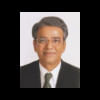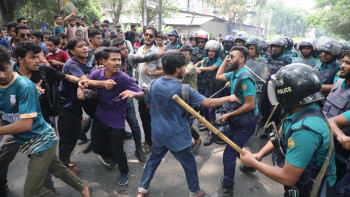Nepal: Confrontations over Constitution
The political situation in Nepal is drifting towards chaos. People opposing the draft constitution have taken to the streets, often engaging in violent clashes with the police. Dozens have been killed over the past several months, including eight policemen, and hundreds arrested. The government has empowered itself with ill-defined emergency powers and has mobilised the army to contain violence.
Nepal has been politically unstable for the past 20 years. Following the "Comprehensive Peace Agreement" brokered by India, the Maoist insurgency (1996-2006) came to an end. The country adopted a hurriedly drafted Interim Constitution in 2007 and went on to elect the first Constituent Assembly (CA-I) in April 2008, which was mandated to write the new constitution within two years. By then the Monarchy was abolished.
CA-I was dissolved in May 2012 as political parties failed to develop consensus over major aspects of the constitution. The second Constituent Assembly (CA-II) was elected in November 2013 and given time to complete drafting the statute by January 2015. The 601-seat CA-II also works as parliament.
As was feared, the stalemate continued as the deadline of CA-II approached on January 22, 2015. To bypass the principle of consensus, Chairman Subash Nembang decided to carry on the drafting on the basis of majority. The opposition parties led by UCPN (Maoist) constantly blocked attempts to build a consensus. There were even fist fights in the Assembly among lawmakers. The division between PM Sushil Koirala's ruling coalition (NC–UML) and the opposition is clear.
However, on June 8, four major parties – Nepali Congress, CPN(UML), UCPN (Maoist) and Madheshi Janaadhikar Forum (Democratic) – signed a 16-point agreement. That paved the way for the first draft of the statute to be tabled in CA-II on August 23. The draft is neither a consensus document nor a democratic one.
The major decisions taken were: divide the country into 8 states; have a parliamentary system of government; a bicameral house; a mixed electoral process involving 'first-past-the-post' (FPTP) and proportional representation (PR); and, an independent judiciary with a constitutional court to resolve legal issues.
The most contentious issue is the identity of the federal states and their powers, which has sparked protests. Boundaries of the new states will be delineated by a Commission. Many fear that creating new states will lead to the balkanisation of the country. The issue has also polarised the nation along ethnic and religious lines. Nepal's 26.62 million people come from 103 recognised ethno-demographic groups (2011 Census).
The Madhes-based parties feel they have been alienated from the constitution. They along with 30 other smaller parties have come together to oppose the constitution. They are seeking more rights for Dalits, ethnic groups, marginalised communities and women. The civil society and media have also joined the agitation.
Many accuse India of instigating the Madhesi people. Madhesi, the biggest bloc of people of Indian origin, live in the southern Terai region, plain land adjoining Bihar of India. They are culturally different from the hill people and constitute 51 percent of Nepal's population. Marginalised lower castes like Gurung, Chhepa, Sherpa, Limbu, Rai, Raute, Thakali, etc. constitute about 35 percent of the population. The remaining 14 percent are hills-based high caste Hindus who have been ruling the country. Demographic heterogeneity has pushed the drafting process into an impasse.
The issues of religion and monarchy have also resurfaced. 'Hindu Kingdom' Nepal became 'secular' following the People's Movement in 2006. And now, public opinion calls for the restoration of the 'Hindu' status. The fear is that secularism will encourage religious conversion. Several parties also want restoration of the monarchy.
According to Deputy Prime Minister Prakash Man Singh the new constitution will be promulgated after two-thirds of CA-II adopts it. It will not be put to any referendum. The constitution was supposed to be promulgated by end August of this year, but CA-II is still working on the draft.
The government's argument that not all in a democracy can be satisfied is a recipe for more confrontation. As the violence continues, Nepal can slip into widespread civil disorder. The risk is disgruntled sections of the population can act as a centrifugal force – pulling the poor nation in different directions. The dormant Maoists can rearm and push the nation towards conflict again.
India has significant influence over Nepal and can probably play a role to ease the tensions among different parties. Delhi, worried about the violence, has urged the Nepalese government to show restraint and make the charter inclusive. China is watching the developments closely. If the situation deteriorates it is unlikely that she will remain an onlooker. UN Secretary General Ban Ki-moon has also urged Nepali leaders to engage in dialogue and ensure that the new constitution is inclusive.
Nepal's massive reconstruction efforts after the devastating earthquake in April 2015 have not taken off. Many suspect unholy motives behind rushing the constitution. The earthquake has come with a bonanza for the ruling elite. The political parties want to have their share of the billions of dollars that are in the pipeline for reconstruction.
Even if that is true, Nepal badly needs an inclusive charter that will bring political stability to the nation. Since constitution drafting has already been delayed, a few more days to produce a liberal democratic charter will do no harm. For once, the politicians have to rise above their parochial interests and unite as they did after the earthquake.
The writer is former Ambassador and Secretary.

 For all latest news, follow The Daily Star's Google News channel.
For all latest news, follow The Daily Star's Google News channel. 



Comments